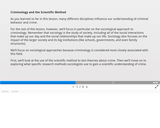
Slideshow on the scientific method
- Subject:
- Career and Technical Education
- Criminal Justice
- Material Type:
- Interactive
- Provider:
- Michigan Virtual
- Date Added:
- 06/26/2019

Slideshow on the scientific method
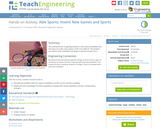
This activity focuses on getting the students to think about disabilities and how they can make some aspects of life more difficult. The students are asked to pick a disability and design a new kind of sport for it.
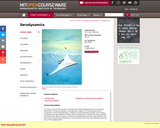
This course extends fluid mechanic concepts from Unified Engineering to the aerodynamic performance of wings and bodies in sub/supersonic regimes. 16.100 generally has four components: subsonic potential flows, including source/vortex panel methods; viscous flows, including laminar and turbulent boundary layers; aerodynamics of airfoils and wings, including thin airfoil theory, lifting line theory, and panel method/interacting boundary layer methods; and supersonic and hypersonic airfoil theory. Course material varies each year depending upon the focus of the design problem.
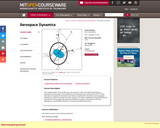
Classical dynamics beyond Unified Engineering. Application of vector kinematics to analyze the translation and rotation of rigid bodies. Formulation and solution of the equations of motion using both Newtonian and Lagrangian methods. Analytical and numerical solutions to rigid body dynamics problems. Applications to aircraft flight dynamics and spacecraft attitude dynamics.
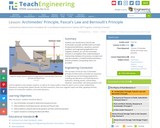
Students are introduced to Pascal's law, Archimedes' principle and Bernoulli's principle. Fundamental definitions, equations, practice problems and engineering applications are supplied. A PowerPoint® presentation, practice problems and grading rubric are provided.

Tony Sarg was a puppeteer and marionette master who invented the first, larger than life, helium balloons for the annual Macy’s Thanksgiving Day Parade. The resource includes a lesson plan/book card, a design challenge, and copy of a design thinking journal that provide guidance on using the book to inspire students' curiosity for design thinking. Maker Challenges include: (1) Dash/Sphero: Develop a Macy’s Day Parade route using tape on the ground with a partner. Then, switch routes with another group and program the robot of your choice to navigate the parade route using code. (2) Ozobot: Develop a synchronized dance routine for both Ozobots for the stage of the Macy’s day parade using https://ozoblockly.com/editor (3) Create a moveable puppet that will be featured in the Macy’s Day Parade.
A document is included in the resources folder that lists the complete standards-alignment for this book activity.

In this activity, a spinning bicycle wheel resists efforts to tilt it and point the axle in a new direction. Learners use the bicycle wheel like a giant gyroscope to explore angular momentum and torque. Learners can participate in the assembly of the Bicycle Wheel Gyro or use a preassembled unit to explore these concepts and go for an unexpected spin!

Using scrap metal and spare parts, William Kamkwamba created a windmill to harness the wind and bring electricity and running water to his Malawian village. The resource includes a lesson plan/book card, a design challenge, and copy of a design thinking journal that provide guidance on using the book to inspire students' curiosity for design thinking. Maker Challenge: Develop a way to harness the wind by designing with Strawbees.
A document is included in the resources folder that lists the complete standards-alignment for this book activity.
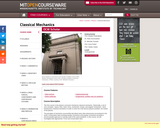
This first course in the physics curriculum introduces classical mechanics. Historically, a set of core concepts—space, time, mass, force, momentum, torque, and angular momentum—were introduced in classical mechanics in order to solve the most famous physics problem, the motion of the planets.
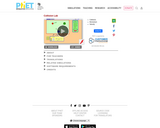
Investigate collisions on an air hockey table. Set up your own experiments: vary the number of discs, masses and initial conditions. Is momentum conserved? Is kinetic energy conserved? Vary the elasticity and see what happens.

This active demonstration investigates the law of conservation of momentum using a person on rollerblades and a thrown medicine ball.
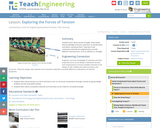
Students will review their knowledge of tension and focus on tensile loads and failure caused by them.

The goal of this lesson is to assist students to relate the forces acting upon particular objects and the “unseen” resolution of those forces. The video begins with a story line involving Adam, who helps his father in the garden by disposing of a garbage bag of leaves—the very act that involves resolution of forces. This lesson includes embedded video clips, animations, diagrams and inquiry-based experiments where students are required to work collaboratively and answer thought-provoking questions. The experiments will involve the study of the resolution of forces on objects placed on varying planes or on platforms of different angles, using materials that are easily found. Finally, students are required to discuss and apply what they have learned to determine whether it is easier to push or to pull a luggage bag with wheels. The lesson will take about 50 minutes to complete.
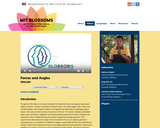
The goal of this lesson is to assist students to relate the forces acting upon particular objects and the “unseen” resolution of those forces. The video begins with a story line involving Adam, who helps his father in the garden by disposing of a garbage bag of leaves—the very act that involves resolution of forces. This lesson includes embedded video clips, animations, diagrams and inquiry-based experiments where students are required to work collaboratively and answer thought-provoking questions. The experiments will involve the study of the resolution of forces on objects placed on varying planes or on platforms of different angles, using materials that are easily found. Finally, students are required to discuss and apply what they have learned to determine whether it is easier to push or to pull a luggage bag with wheels. The lesson will take about 50 minutes to complete.
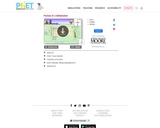
Explore the forces at work when you try to push a filing cabinet. Create an applied force and see the resulting friction force and total force acting on the cabinet. Charts show the forces, position, velocity, and acceleration vs. time. View a Free Body Diagram of all the forces (including gravitational and normal forces).

After the Great Depression struck, Ford especially wanted to support ailing farmers. For two years, Ford and his team researched ways to use farmers’ crops in his Ford Motor Company. They discovered that the soybean was the perfect answer. Soon, Ford’s cars contained many soybean plastic parts, and Ford incorporated soybeans into every part of his life. He ate soybeans, he wore clothes made of soybean fabric, and he wanted to drive soybeans, too. The resource includes a lesson plan/book card, a design challenge, and copy of a design thinking journal that provide guidance on using the book to inspire students' curiosity for design thinking. Maker Challenge: Think about the people in your community and the challenges they face. List three challenges that affect their daily life. Consider something you use every day and brainstorm how it could be repurposed or modified to address this problem.
A document is included in the resources folder that lists the complete standards-alignment for this book activity.

In this lesson, we learn how insects can fly in the rain. The objective is to calculate the impact forces of raindrops on flying mosquitoes. Students will gain experience with using Newton's laws, gathering data from videos and graphs, and most importantly, the utility of making approximations. No calculus will be used in this lesson, but familiarity with torque and force balances is suggested. No calculators will be needed, but students should have pencil and paper to make estimations and, if possible, copies of the graphs provided with the lesson. Between lessons, students are recommended to discuss the assignments with their neighbors.

In this lesson, we learn how insects can fly in the rain. The objective is to calculate the impact forces of raindrops on flying mosquitoes. Students will gain experience with using Newton's laws, gathering data from videos and graphs, and most importantly, the utility of making approximations. No calculus will be used in this lesson, but familiarity with torque and force balances is suggested. No calculators will be needed, but students should have pencil and paper to make estimations and, if possible, copies of the graphs provided with the lesson. Between lessons, students are recommended to discuss the assignments with their neighbors.
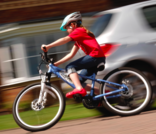
This lesson is intended for teach students the basics of motion: constant velocity. Students will gain an understanding of position, velocity, speed, distance, and displacement after completing this. This lesson took two hour long class periods for 10th grade introductory physics students to complete. The lesson would also be appropriate for upper middle school depending on the required standards.

This lesson presents the basics of aerodynamics by using kite flying as an example, i.e., forces acting on a flying object. Students will measure the net force acting on a kite due to blowing air and will learn how a simple instrument like a spring can be used to measure such force. They will also examine and experience how the force on the kite is transferred to the string in the form of tension and will again measure that tension with a simple spring. This lesson will take about 30 minutes to complete. One will need a calibrated spring to measure forces, as well as a few springs to study the coplanar forces.